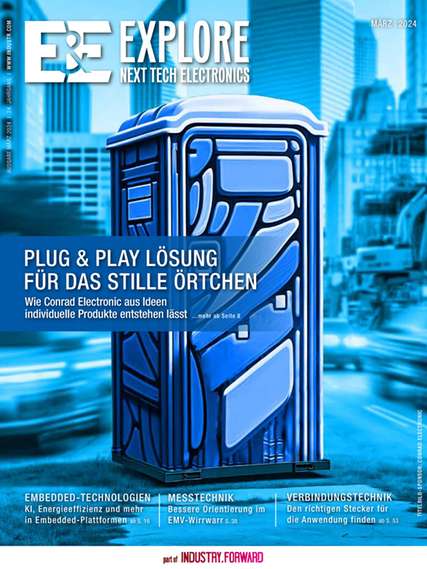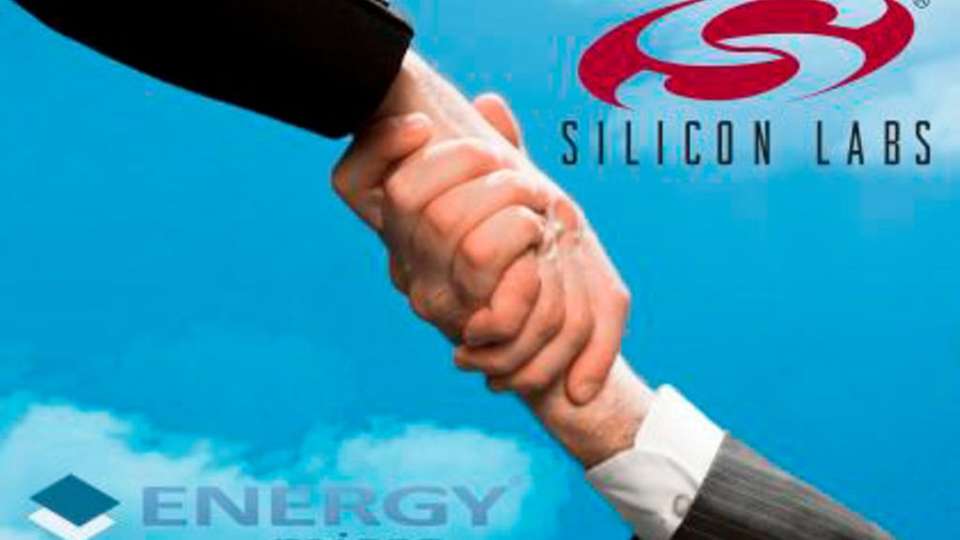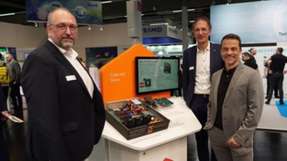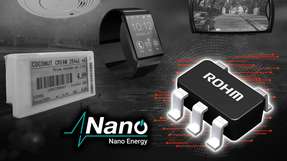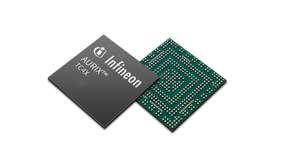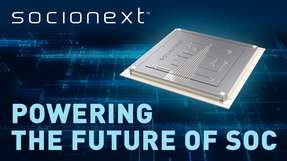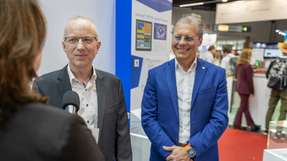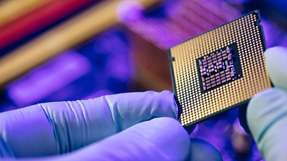When did Energy Micro catch your attention for the first time, and how did you get together?
We have been following Energy Micro's rapid progress since the company was founded by Geir Førre (CEO of Energy Micro) and his team in 2007. Our interest in Energy Micro deepened in 2009 when they introduced their energy-friendly EFM32 Gecko MCUs. We had initial discussions at that time about cooperation and licensing, which created some positive connections between the companies and planted the seeds for the future acquisition. Even then, I realized that Energy Micro's focus on energy-friendly solutions represented the best opportunity in terms of where mixed- signal technology - Silicon Labs' primary focus - could have the most impact on the embedded world. So I started considering the various options including developing our own ultra-low-power MCU solutions and also combining efforts with Energy Micro. We reached out to Geir last fall, met for breakfast in Oslo and discussed ways that we could cooperate and join forces to be able to compete effectively against much larger MCU suppliers. We had a common set of competitors, companies with more than $10 billion in revenue and long histories in this business. Both of our companies wanted to participate in the 32-bit MCU market in a meaningful and disruptive way and take share away from these much larger competitors. As we started our discussions, we realized that we had complementary cultures and skill sets that made our two companies a very unique fit. We resumed discussions in February and talked specifically about what this acquisition would look like - financially, organizationally and in terms of product roadmaps. And it became clear that it made good sense to unite our companies and combine our embedded portfolios and technologies to leapfrog the competition in delivering best-in-class energy-friendly ARM-based solutions.
What were your main reasons for the acquisition?
The acquisition of Energy Micro accelerates Silicon Labs' growth opportunities and positions us as the foremost innovator in energy-friendly embedded solutions. The growth of the Internet of Things (IoT) market, coupled with continued deployment of smart grid and smart energy infrastructure, is driving strong demand for energy-efficient processing and wireless connectivity technology to enable connected devices in which low-power capabilities are increasingly important. Industry experts predict that the number of connected devices for the IoT will top 15 billion nodes by 2015 and reach 50 billion nodes by 2020. This is where Energy Micro's energy-friendly MCUs come into play. The acquisition significantly expands our MCU portfolio with the addition of the most energy-efficient 32-bit solutions in the embedded industry.
Don‘t you think that there will be an overlap between the two product portfolios?
Energy Micro's portfolio complements Silicon Labs' 32-bit Precision32 MCUs, Ember ZigBee SoCs and sub-GHz wireless products and targets a growing embedded market. The acquisition expands Silicon Labs' MCU portfolio by adding nearly 250 ARM-based EFM32 Gecko MCU products, including the newly introduced Wonder Gecko MCUs powered by the high-performance Cortex-M4 core capable of DSP and floating-point operations. In addition, integrating low-power ARM cores with RF transceivers into wireless SoC devices makes a lot of sense for power-sensitive applications such as wirelessly connected devices for the Internet of Things. Our acquisition of Ember in mid-2012 provided us with best-in-class ZigBee software solutions, and Energy Micro also gives us access to other low-power wireless protocols such as Bluetooth Low Energy. We currently offer a line of Ember ZigBee wireless SoCs and plan to develop new generations of ARM-based solutions incorporating the best energy-friendly and embedded wireless technologies from both companies.
What about the customers? Do you have any overlap here? What are the consequences for both Silicon Labs‘ and Energy Micro‘s customers?
The beauty of the broad-based embedded business is that it provides Silicon Labs with many thousands of unique customer opportunities. Within our embedded business, no one large customer dominates the revenue stream - it's really a combination of many smaller customers. To support thousands of embedded customers efficiently, we partner with industry-leading distributors that provide a scalable global support model. The same embedded market dynamic holds true for Energy Micro as well. They also have numerous customer relationships in the embedded market and key distribution partnerships. Overall, our customer bases are highly complementary. We share a similar focus on target applications such as smart energy, connected home, security systems, portable electronics and the rapidly emerging Internet of Things market. Our product portfolios for customers developing in these application areas are also complementary: Energy Micro excels in energy-friendly ARM-based MCUs while we excel in both 8- and 32-bit mixed-signal MCU platforms, as well as sub-GHz and 2.4 GHz ZigBee wireless solutions. As a more established, diversified public company, Silicon Labs has a larger global channel and supply chain as well as a larger financial base to drive growth and roadmap development. In essence, this acquisition brings significant global scale to Energy Micro's energy-friendly portfolio, which will be viewed quite positively by our combined customer base.
What about the Energy Micro customers? Will they have to redesign their applications?
Definitely not. Energy Micro's customers can continue to order and implement their designs using the EFM32 Gecko families. Silicon Labs will also continue the focus on providing easy-to-use enablement solutions. That means we will further invest in the Simplicity Studio including popular tools like the energyAware Profiler. Customers will also benefit from the integrated development environment and software tools that Silicon Labs has created to simplify and accelerate 32-bit development. We appreciate the confidence that existing customers have in the EFM32 Gecko products and development platforms, and we are committed to providing outstanding support as we merge our portfolios, tools and roadmaps. Silicon Labs also offers a large portfolio of mixed-signal semiconductor products that complement Energy Micro's solutions such as our sub-GHz RF transceivers and 2.4 GHz ZigBee wireless SoCs, which enable customers to add ultra-low-power, high-performance wireless connectivity to their embedded designs. In addition, EFM32 Gecko customers will have the assurance that we will continue to meet their needs through Silicon Labs' extensive global network of sales offices and distribution partners.
What markets are you aiming at with this acquisition?
We expect that the addition of Energy Micro's EFM32 Gecko MCUs, ultra-low-power technology expertise, development tools like the Simplicity Studio, and world-class design and applications teams will drive the rapid expansion of the broad-based business. We intend to apply these complementary embedded technology platforms and expertise to enable the industry's most energy-efficient solutions for the Internet of Things and smart energy markets, as well as the proliferation of battery-powered portable electronics devices. In addition, both companies' 32-bit MCU and wireless products leverage the same ARM Cortex-M architecture, which is expected to accelerate the combined roadmap and support rapid adoption among the existing customer base.
What are the advantages for both companies?
We believe that the combination of portfolios, technologies and engineering talent will greatly benefit our customer base and enable us to compete more effectively in the embedded market. Energy Micro offers the industry's most energy-efficient 32-bit portfolio - the EFM Gecko MCUs. Silicon Labs has its own strong mixed-signal MCU business and is a recognized leader in ultra-low-power radios ranging from sub-GHz transceivers to ZigBee wireless SoCs. This strategic acquisition significantly expands Silicon Labs' portfolio of 32-bit MCUs, enables us to develop multi-frequency, multi-protocol wireless RF solutions based on the ARM Cortex-M architecture and accelerates our energy-friendly position in the Internet of Things and smart energy markets. Ultimately, the combination of Silicon Labs' and Energy Micro's energy-friendly products, software and solutions creates a formidable force in today's ARM-based MCU market that has the scale to leap ahead of much larger MCU suppliers.
You have some experience with acquisitions. How would you rate this one?
While each Silicon Labs acquisition offers unique strategic value, the Energy Micro acquisition has huge upside potential for our broad-based embedded business. For this reason, we are handling this acquisition a bit differently than others in terms of leadership and integration. Going forward, our embedded MCU products will be based in Oslo, Norway, and we will augment that team with sales and support resources from around the world. In addition, Geir Førre has become the senior vice president and general manager of our combined MCU business. We have enormous confidence in Geir and his team in Oslo, which is why we have decided to combine our MCU and wireless IC businesses under his leadership. This decision is also a testament to our companies' unique cultural fit. Combining our resources and talent in this manner will enable us to compete and win against much larger companies in the embedded market. We have all the pieces in place and the combined energy and enthusiasm to succeed!
Usually all your businesses are based in Austin - why do you make an exception this time?
Energy Micro has a very talented workforce in Oslo. TI, Atmel and Nordic Semiconductor all have a strong presence Oslo. A number of other companies are pursuing low-power development in Oslo and demonstrating a high degree of success. There‘s also an extensive ecosystem of engineering talent and experience in Oslo that makes this a good place to have a base of operations. We have approximately 60 employees in Oslo, and the total number of employees related to our MCU products will be around 200. As we see the business grow - and I think that the prospects of that are very bright in terms of the trajectory of our roadmap, sales activity and design wins - the intention is to grow the team in Oslo as well. Putting the Oslo team in the lead for our embedded roadmap and development effort is a huge statement in terms of our faith in the team and its ability to grow the business.
What do the both companies have in common?
Silicon Labs and Energy Micro share a complementary vision of a greener, smarter, wirelessly connected world, and the foundation for this combined vision is energy-friendly technology enabled by each company's innovative mixed-signal design. The acquisition combines two proven leaders in ultra-low-power MCU and wireless SoC design into a formidable force that will accelerate the deployment of energy-friendly solutions across the Internet of Things and smart energy industries to benefit our customers, our companies and our shareholders. We also view this acquisition as a good fit not only in terms of technology, but culturally as well. We have extremely passionate innovators in both companies, and I cannot wait to see what we can do when we put them together.




